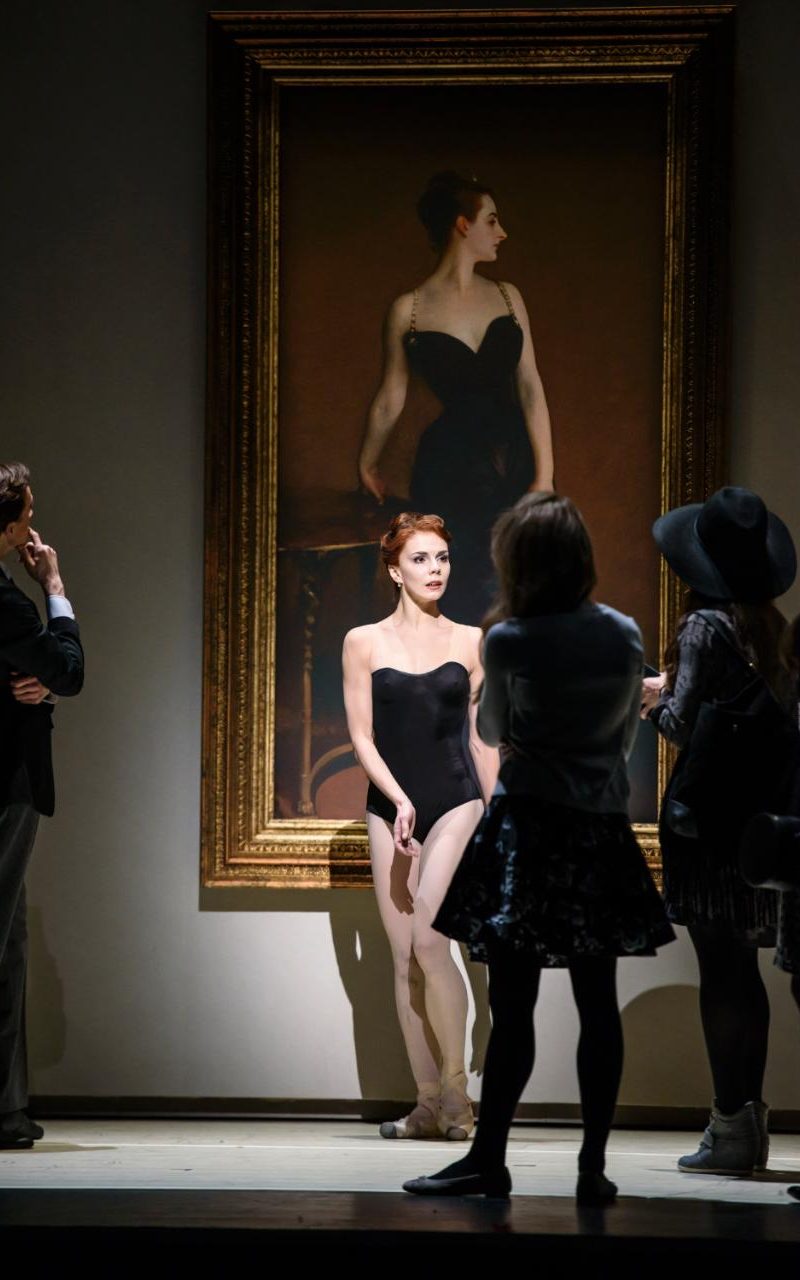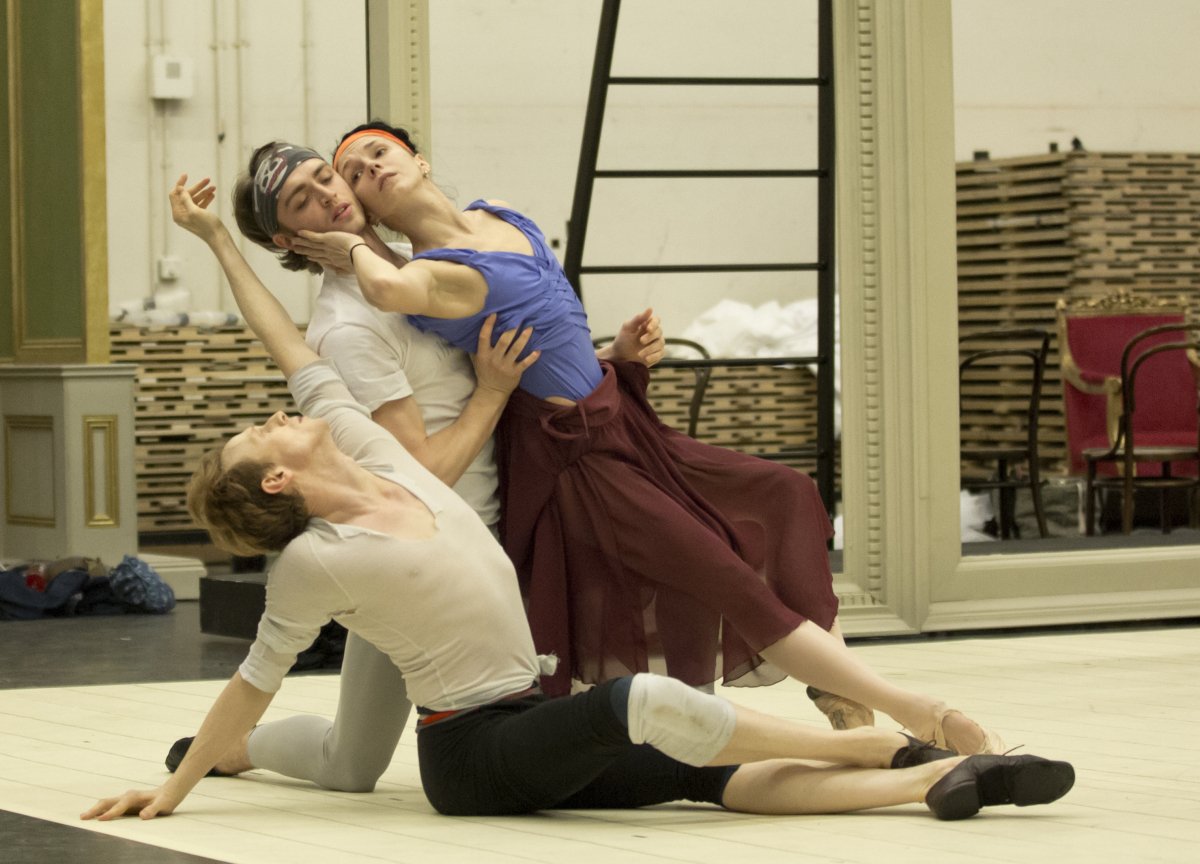Shouldn’t ballet have previews? Wouldn’t it help dancers and choreographers alike? As with most bad things, the money says no. Ballets have short runs, so you slap ’em on stage and get reviews and publicity whirring at the earliest opportunity. Good for box office and bar takings, but how about the art?
A triple bill by a living choreographer is a rarity at the Royal Ballet, usually only granted on presentation of a death certificate. But the current meaty programme by Christopher Wheeldon includes two toothsome revivals – the abstract After the Rain and Within the Golden Hour – sandwiching a chewy, messy premiere: Strapless, based on the shoulder-baring scandal of John Singer Sergeant’s 1884 portrait Madame X. Might it have landed more smartly with a preview or two? A performance isn’t merely about artists showing an audience what they’ve got; it’s about an audience helping artists see what’ve created. Previews let them rethink and refine. Strapless needs an audience to pinpoint the narrative blurs and occluded intent.
I haven’t read Wheeldon’s source, Deborah Davis’ book of the same name, though in synopsis, it’s the novel Edith Wharton never wrote: two Americans feel they are flowering in Paris, only to bump into the limits of the culture and their self-reinvention. Tricky material for dance, it depends on social and psychological nuance, without a novel’s linguistic ambiguities or the map of facial warmth and freeze that cinema allows. In the evening’s other ballets, dancers press flesh in minimal costume – the frisson of an exposed shoulder is hard to convey.
Doing the don’t
Wheeldon’s work centres on Sargent (Edward Watson) and Amélie Gautreau (Natalia Osipova): the painter whose being is seeing, the muse who longs to be seen. Gautreau’s trademark move is a turn – give us a twirl, Amélie – offering a delighted display in all directions. She borders on the classic ballet flirt, taking the town and catching eyes with her sexy moves.
Sargent’s gift as a portraitist was for swagger and suggestion – his sitters look fabulous, but their longing (and the artist’s own?) peeks through. Wheeldon presents one recurring subject, the young aristo-artist Albert de Belleroche (Matthew Ball), as Sargent’s lover (to some homophobic disappointment) – and his most interesting sequence takes flight from the fact that the painter sketched both sitters in near-identical poses. Osipova and Ball glide in profile past an opaque canvas, and join Watson in a snaky, tenderly knotted trio (above, in rehearsal – photo Andrej Uspenski/ROH). Is the woman a substitute for the youth, or is the portrait an ambiguous palimpsest of Sargent’s art and heart? For both artist and muse, is painting a sexual act?
Wheeldon doesn’t quite nail the image; nor the waft between high society and bohemia (we get an ooh-la-la café cluttered with cancan dancers); nor the weight of Parisian disapproval (people wear black and point). Ballet can do sex – Amélie’s affair with Dr Pozzi (Federico Bonelli), the hornbucket gynaecologist from one of Sargent’s most famous portraits, is conducted with a brisk crotch shuttle, suggesting that the doc did indeed know his way around lady parts. Bonelli also has a moment with Watson and serial fumble with the café minxes: ballet can suggest doing the do, but doing the don’t is more complex.
The most telling scene, for me, was the last (pictured top, by Bill Cooper). Osipova is in her vulnerable undies – her undress figuring not sex but shame – and is almost swept away by an advancing wall displaying her portrait. Time vindicates the artwork but ignores the woman who inspired it: reinforced by the modern gallery visitors and their guide (Watson again) who cluster around the painting oblivious to Osipova. As my chum noted, I had missed the final line of the synopsis: ‘The painting ultimately brings Amélie the fame and immortality she had so craved in life.’ Arrogantly, I find that sentimental baloney, and prefer my mistaken reading. The artwork is lauded, its subject all but forgotten. The desire that animated its origin becomes a note in the catalogue.
Art takes time, and it takes work. Wheeldon successfully retuned Alice’s Adventures in Wonderland between the premiere and first revival (adding an extra interval; cutting not quite enough), and could similarly revisit The Winter’s Tale when it returns in April. The furore over Benedict Cumberbatch’s Hamlet spotlit how previews are theatre’s test kitchen; last autumn I saw Mr Foote’s Other Leg having already caught a preview, and was impressed at how much sharper and funnier it had become after just a few nights. The Bolshoi will perform Strapless next year, and Wheeldon may land it with greater force. But wouldn’t choreographers love a chance to complete work first time round? Does this happen elsewhere? As Strapless suggests, art is in for the long haul: an underdone premiere satisfies no one.
UPDATE Soon after posting, it occurred to me that something was wrong with the photo of the last scene. In my memory, Osipova had been wearing white rather than black. I asked Twitter to help resolve the question and @millymillon and @annakardar both confirmed the ballerina wore white. That change must have taken place following the dress rehearsal (and for good, making the vulnerability keener). It reinforces my conviction that previews could be immensely valuable.
Follow David on Twitter: @mrdavidjays



Yes, they changed from black to white leotard in the last scene between the dress rehearsal that was photographed on Thursday, to the opening night performance on Friday. I thought it made her look even more vulnerable – but, with the white peeping above the bust part of the dress, made that dress look awful
Thanks so much for confirming, Dave. Did you notice anything else significant that changed between the dress rehearsal and the first night? It’s a fascinating process.